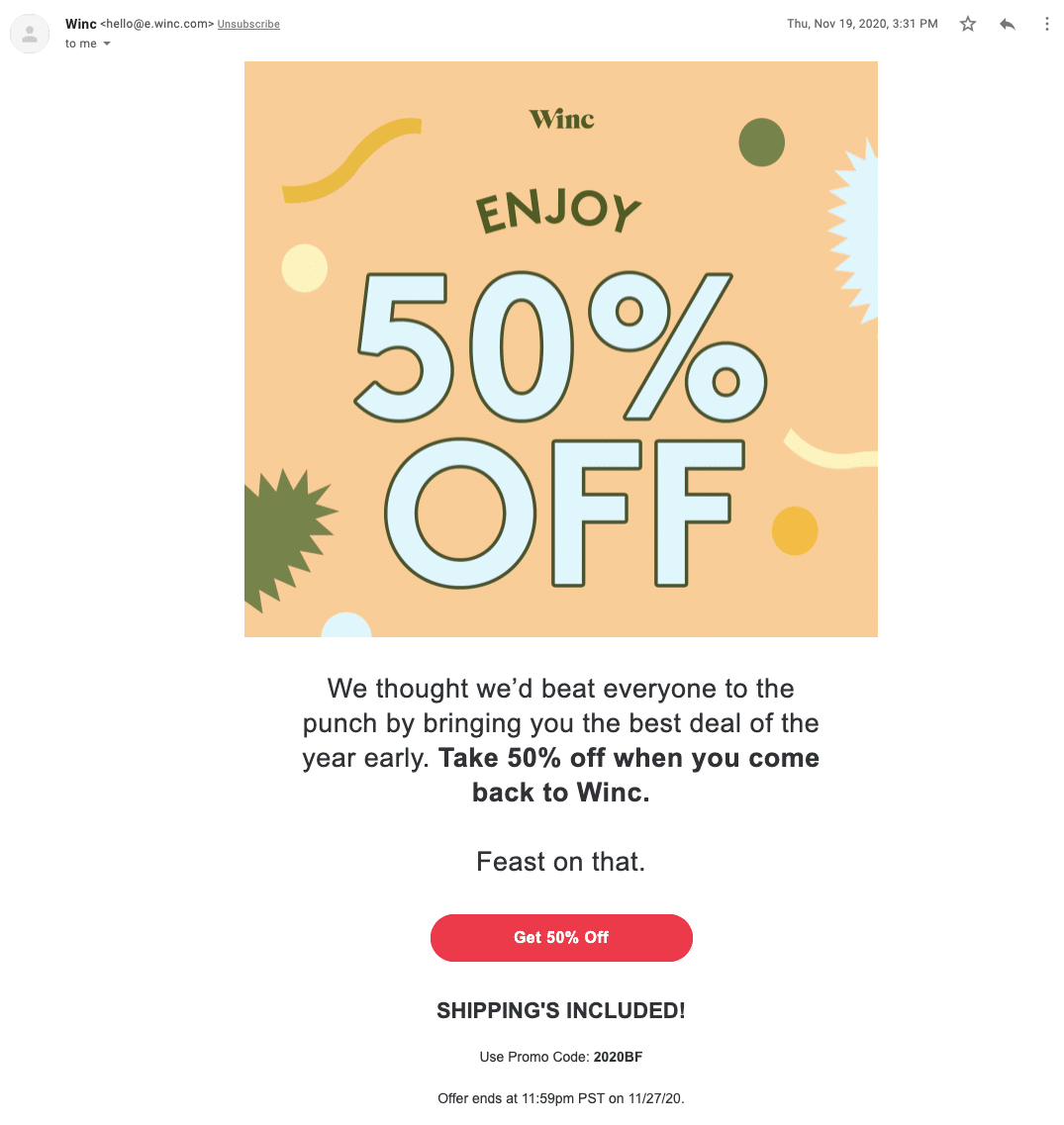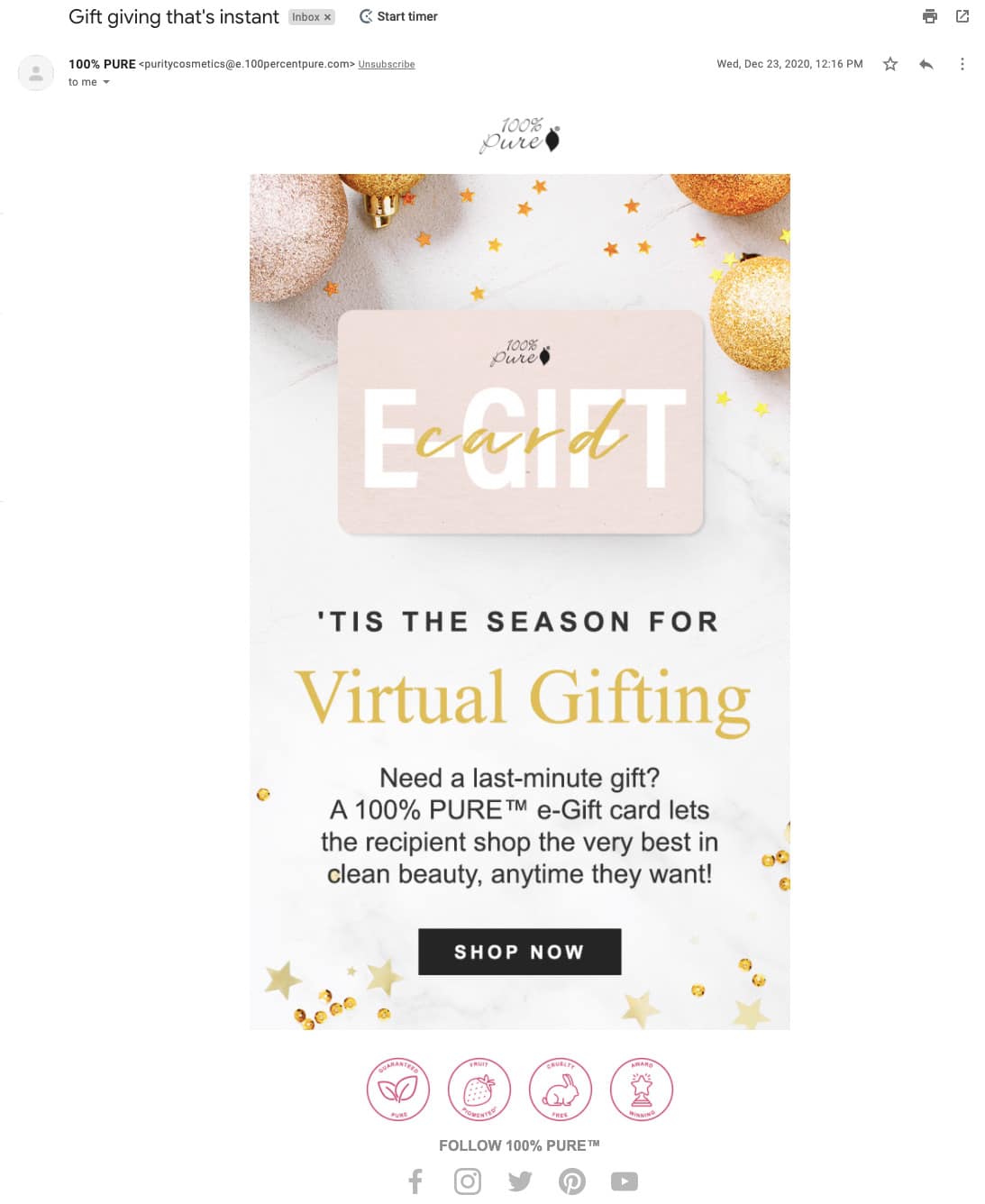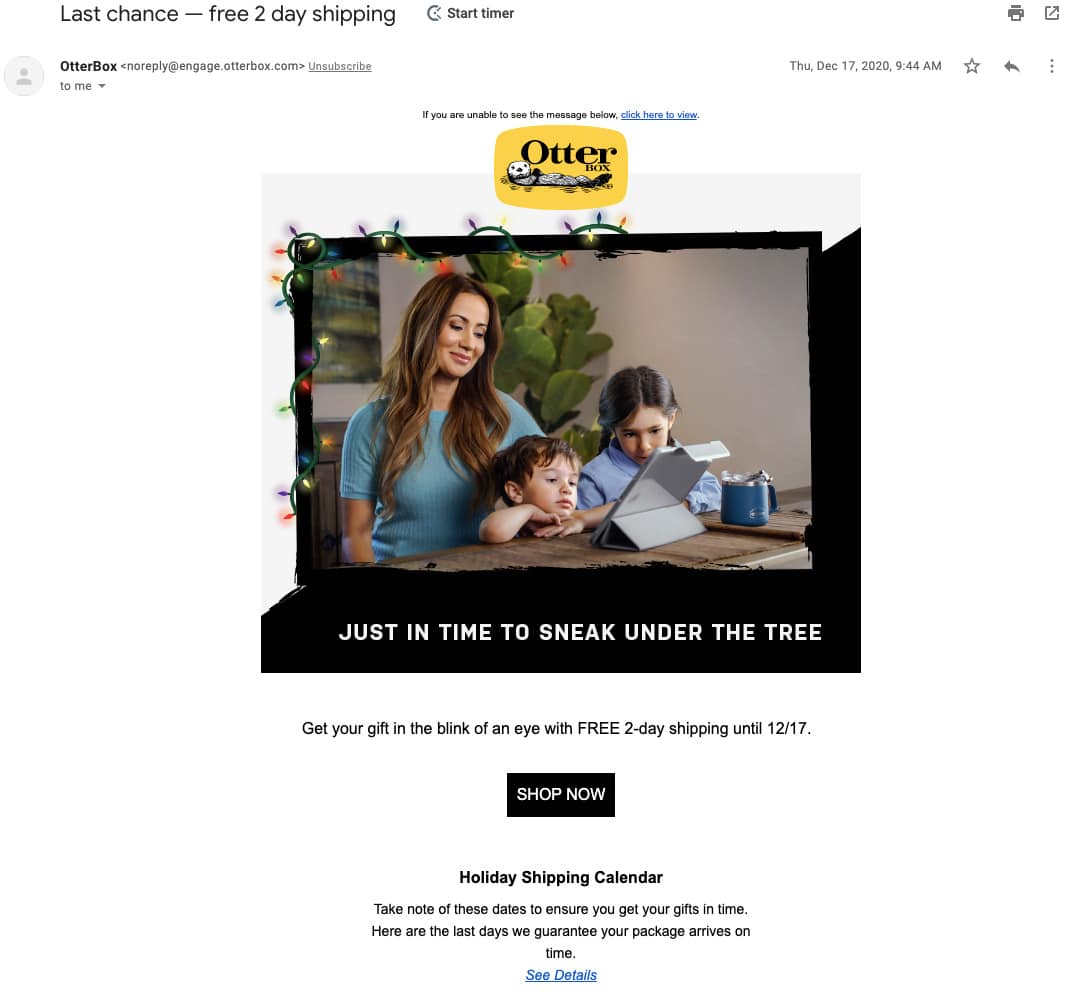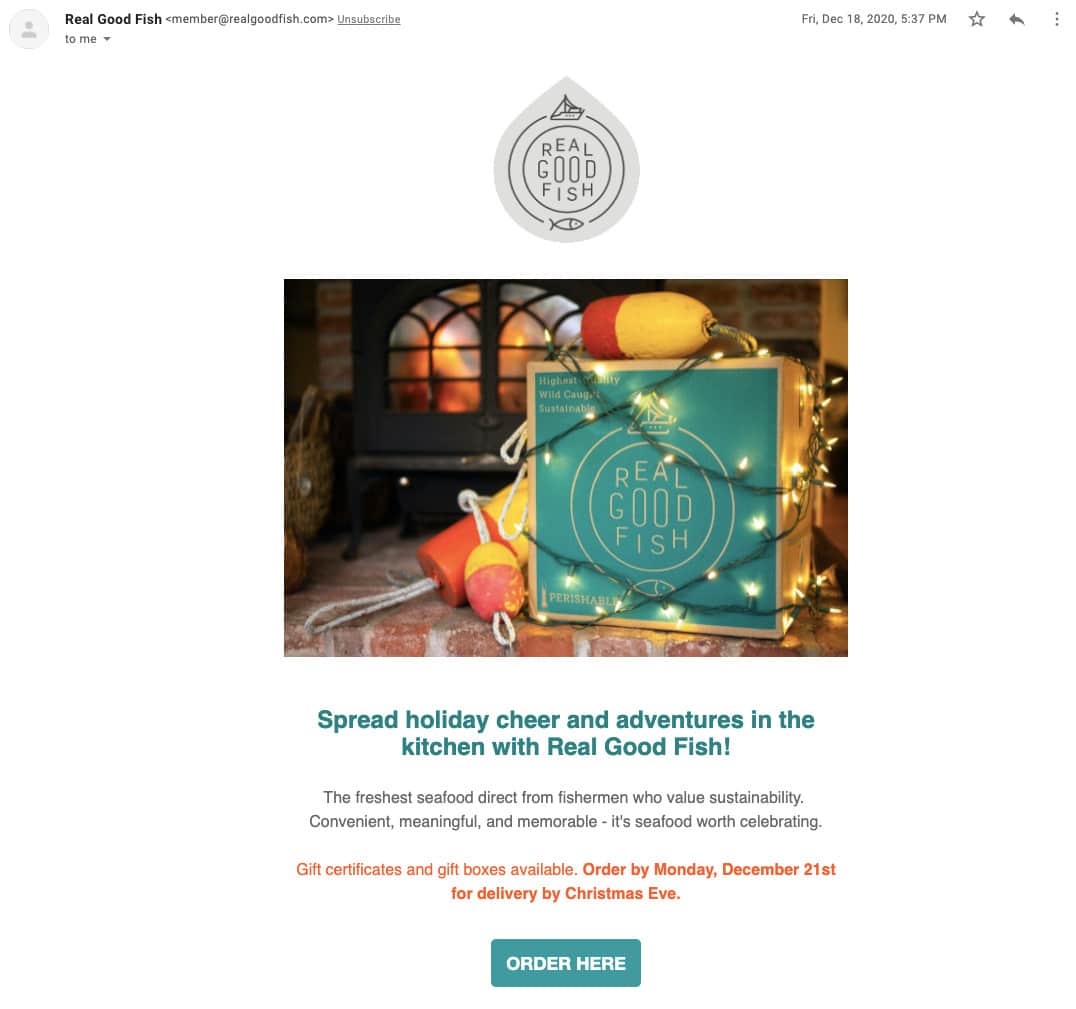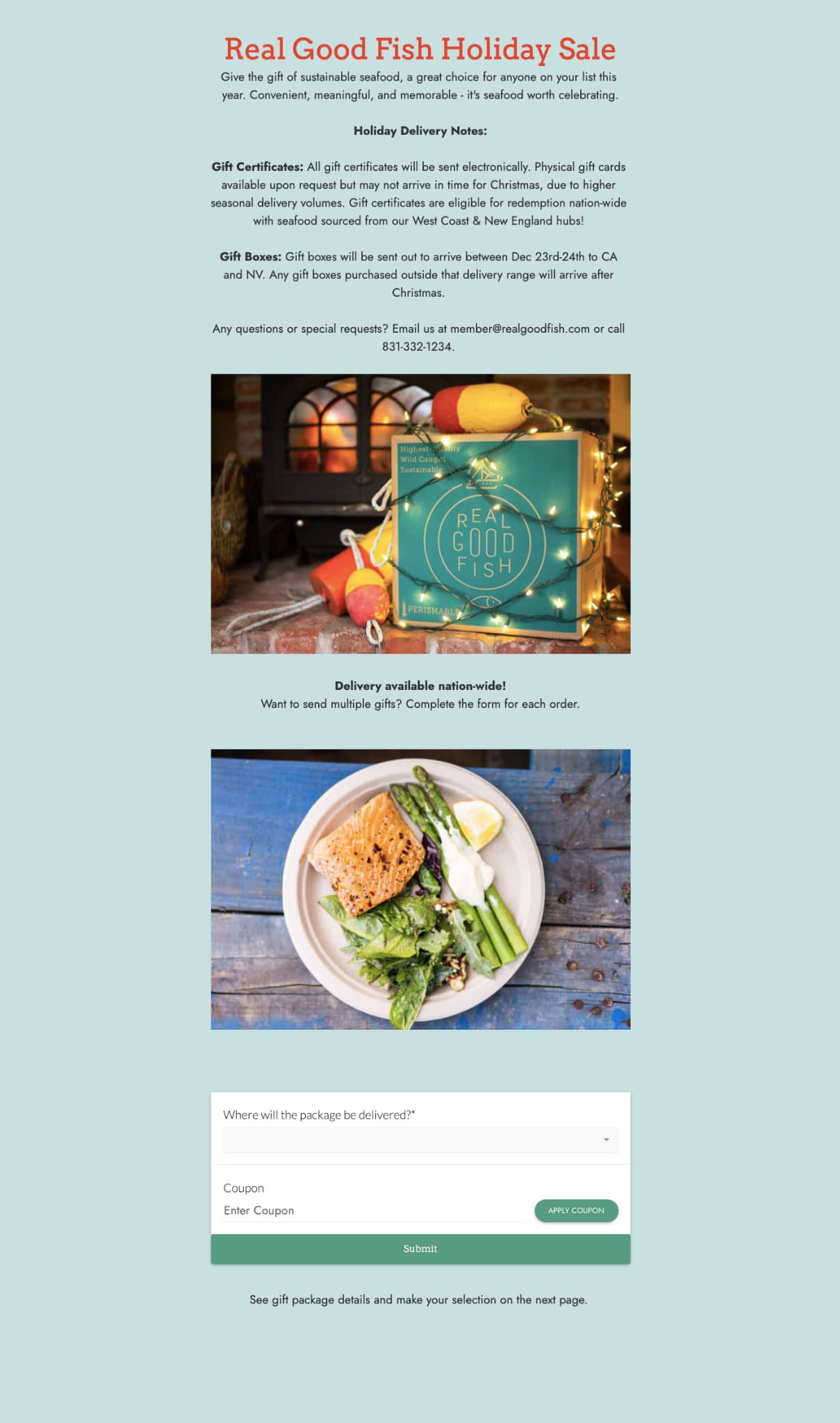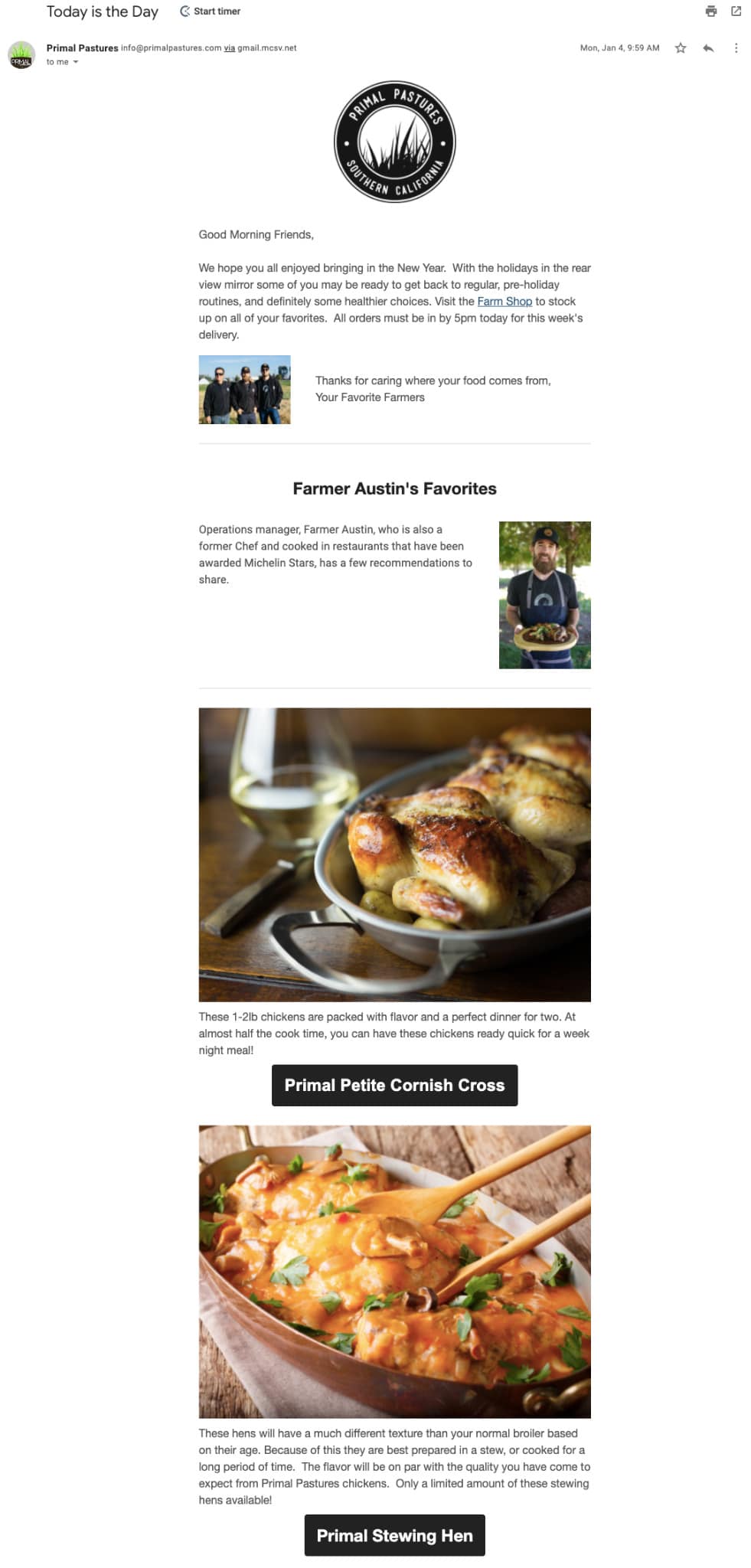The Ultimate Guide to Holiday Email Marketing
Posted by admin on
Holiday sales have increased every year since 2002 — with the exception of 2008, during the Great Recession. Last year, retailers were concerned that the pandemic would decrease 2020 holiday sales, similar to what happened in 2008.
However, the opposite occurred. Despite a global pandemic, the rate of increase of holiday sales between 2019 and 2020 was more than double the average year-over-year growth of previous years, exceeding predictions from the National Retail Federation.
This enduring upward tick in holiday sales illustrates that consumers have built lasting habits around holiday spending. Smart brands will respond accordingly. With a rock-solid holiday email marketing strategy, your brand will be in a prime place to grow holiday sales in 2021. Here’s how to do it.
Editor’s note: this post was updated for accuracy and freshness in September 2021.
Why email makes the best holiday marketing tool
While all marketing channels have their benefits, email is especially suited for promoting holiday sales. The trends in consumer behavior that were accelerated by the pandemic have only strengthened email’s position as the best holiday marketing tool.
Emails are made for our mobile world
Mobile shopping skyrocketed in 2020, with many people feeling uneasy about shopping in person. Techcrunch forecasted that hours spent on mobile shopping would be up an incredible 50%, making 2020 a record year for mobile shopping.
With the pandemic still lingering into this fall, this trend toward mobile shopping is unlikely to waver for the 2021 holiday season. Moreover, the advent of better in-app shopping experiences from mobile-first social media platforms like Instagram and, more recently, TikTok, seems to have cemented this mobile shopping trend.
Email is tailor-made for consumers who shop via their smartphones. Since 2019, more emails have been opened on mobile devices than desktop clients.
The path from reading an email to taking advantage of a holiday sale is just one step: With responsive, ready-made email templates, consumers must only press the “Buy Now” button in an email to start shopping on mobile.
Emails offer instant buying options
Last year, Forbes reported that 2020 had accelerated and solidified a key holiday shopping habit: Buying based on discounts. This suggests that consumers are looking to take advantage of flash sales and instant buying options during the holidays.
One channel that is ideally suited to promoting such sales and “instant buys” is email. Email has instant buying options, with retailers able to include “Buy Now” buttons that take readers right into their cart.
Personalization makes email more effective and efficient
Personalization in marketing is another effective trend that continues into 2021. Email, unlike social media or advertising, is one of the few marketing channels that offer ample opportunities for personalization.
The data shows that personalized emails improve metrics across the board, from an 8X improvement in click-through rates to 6X higher transaction rates.
Retailers who want to take advantage of the effectiveness of personalization in holiday marketing should look no further than email.
8 holiday email marketing strategies for your best holiday sales yet (with examples!)
How can you optimize your email marketing for your best holiday season yet? We’ve taken a look at what worked best in 2020 and analyzed how brands can apply these strategies in 2021.
1. Write subject lines your subscribers can’t resist
Subject lines are the first barrier to email effectiveness. To drive holiday sales through your email marketing, your subject lines must be optimized for open rates.
One strategy is to use “power words” that mention things people are thinking about this time of year:
- Sales-driven: Hot deal, promotion, discount, savings, free shipping
- Timeliness: Order now, limited-time, today-only, last minute, Open now, Exclusive
- Holiday: Good cheer, 12 Deals of Christmas, Season’s Greetings
- Words of gratitude: Thank you, appreciation, your support
Another proven strategy is to personalize your subject lines. We’ve found that personalized subject lines (such as including the recipient’s name) increase open rates by 26%.
Finally, use emojis — if emojis are on-brand for your organization. Emojis have been shown to increase open rates by a notable 45%! Interestingly, the most popular emoji is the snowman, which lends itself particularly well to holiday emails.
For inspiration, check out how Bed Bath and Beyond used Christmas-themed emojis in a holiday sale email:
2. Promote Black Friday and Cyber Monday sales early
Cyber Monday is now the largest shopping day for e-commerce, with Black Friday in second place.
However, recent years have revealed a trend of extending these single-day sales into multiple days or even weeks. 2020 accelerated this trend, with more retailers than ever offering week-long Black Friday or Cyber Monday sales, citing a desire to reduce crowds during the pandemic. So, with these big sales starting earlier than traditionally, brands should consider bumping up or extending their email marketing promotions as well.
Additionally, it’s reported that consumers who shop from your brand for the first time on Black Friday or Cyber Monday visit your website, on average, 41 days before the sale to investigate what they want to purchase. This means that brands need to start promoting these big sales as early as possible to alert consumers and give them ample time to prepare to shop.
For example, in 2020, Winc sent out an “Early Black Friday” sale email that not only drove sales before the “big day” but also got consumers thinking about the brand as a potential Black Friday/Cyber Monday shopping destination.
3. Send a holiday guift guide
“Holiday gift anxiety” is a documented phenomenon that many people experience as the holiday season looms. This form of anxiety centers around not knowing what to give to loved ones. Brands can speak to this problem by sharing gift guides to their email lists, relieving subscribers of some of the decision paralysis that goes along with choosing holiday gifts.
Brands can even send multiple gift guides, each curated for a certain type of shopper. For example, brands could curate gift guides based on….
- Price point (Gifts under $50)
- Relationship (Gifts for Mom, Boss, Husband, Teacher, Clients, Employees, etc)
- Hobbies or interests (Gifts for people who love camping)
- Age group (Gifts for teens, seniors, etc.)
- Product type (Electronics, clothes)
For inspiration, look to Yoga Accessories, an online retailer that created multiple gift guides for their email subscribers, including “Gifts under $25,” “Stocking Stuffers,” and “Meditation Gifts.”
4. Utilize last-minute deals
In 2020, 79% of shoppers left their gift shopping to the final two weeks before Christmas. This means that brands should continue to promote holiday sales right up until the holiday to serve the last-minute shoppers.
Additionally, it was found that 64% of these last-minute shoppers intended to shop in person, possibly because they worried an online gift wouldn’t arrive at its destination on time. With this in mind, brands should promote last-minute sales, especially for in-person locations.
Alternatively, brands could take a cue from 100% Pure, which promoted e-gift cards as a perfect last-minute gift idea, since deliverability is instant.
5. Relieve online gift-giving worries
The 2020 e-commerce boom suggests that most people are comfortable shopping online. Yet, a survey revealed that there is a significant percentage of people who harbor hesitations about buying gifts online. The top two worries were:
- Will my gift arrive on time for the holidays? (1 in 5 people worried about this)
- Will this gift be easy to return or exchange? (1 in 4 people worried about this)
Smart retailers can assuage these worries by addressing them directly in holiday sales emails.
For example, in 2020, Otterbox sent a holiday email that clearly outlined dates customers needed to purchase gifts by in order for recipients to receive them by Christmas:
6. Send click-through traffic to a dedicated purchase page
Don’t spend time crafting a winning email marketing strategy, only to lose people after they click through. Rather than sending click-through traffic to your website homepage, where people then have to navigate to find the product or sale mentioned in the email, create a dedicated landing page for your email campaign.
When your email matches your landing page, customers are reassured that they clicked the right button, and you reduce friction in the conversion process.
To illustrate how this works, let’s take a look at this holiday email campaign from Real Good Fish:
The “ORDER HERE” button directs readers to the following dedicated landing page that matches the language and design of the email:
7. Send post-holiday emails
Post-holiday emails can serve two purposes, both tied to driving repeat customers:
- Engage subscribers who joined your list for a great holiday deal and nurture them to become repeat, long-term customers
- Signal a “return to normalcy” for long-term subscribers who look forward to receiving your regular, non-holiday emails
Though boosting holiday sales is a good short-term goal, it’s the repeat customers who stick around beyond the holiday sales who will help you build profitability into your company. This is because repeat customers are 9X more likely to convert than first-time visitors, so you can make sales with less time and money spent marketing to them.
Primal Pastures is a good example of a company that values its repeat customers and loyal subscribers. After the holiday rush of 2020, they sent this post-holiday email acknowledging their subscribers’ desire to get back to regular eating habits:
8. Appeal to values-based consumers through alternative holidays
Modern consumers appear to be more likely to view big shopping days like Black Friday and Cyber Monday as excess consumerism that is out of alignment with their personal value of mindful consumption.
These consumers may be more likely to respond to “holiday sales” that center around values-based shopping — namely, Small Business Saturday and Giving Tuesday.
Small Business Saturday
Small Business Saturday falls on the Saturday between Black Friday and Cyber Monday. It was started in 2010 by the US Small Business Administration in response to a growing “shop small” movement.
Small Business Saturday appeals to consumers who want to support their local economy or value the transparency and quality that small companies can afford compared to massive corporations. Between 2018 and 2019, there was a sharp increase of 3 million participants in Small Business Saturday.
This trend appears to have been accelerated by COVID-19. Amid the pandemic, 53% of Gen Z consumers reported a desire to cut back on Amazon spending and funnel that money into local businesses instead.
Small or locally-owned brands can stand out from the masses of holiday sales emails by promoting a Small Business Saturday sale instead.
For instance, Primal Goods sent out an email for Small Business Saturday 2020, which deliberately speaks to their audience separate from Black Friday or Cyber Monday shoppers and reiterates the benefits of shopping small:
Giving Tuesday
Giving Tuesday takes place the Tuesday after Black Friday and Cyber Monday. It’s meant to encourage giving to charity around the globe. For consumers, Giving Tuesday often takes the form of being an alternative shopping day to Black Friday or Cyber Monday, as some brands donate a percentage of Giving Tuesday sales to charity.
Giving Tuesday appeals to values-based consumers because it allows them to get necessary holiday shopping done while supporting causes they care about (instead of merely increasing corporate profits).
Brands can opt to do a Giving Tuesday sale instead of (or in addition to) Black Friday/Cyber Monday, donating a portion of proceeds to a cause.
For example, Who Gives A Crap sent out this Giving Tuesday email, which highlights how buying from the brand supports their nonprofit partners:
Need more holiday marketing ideas? Check out our Holiday Marketing resource hub!
Wrap up
By using this holiday email marketing guide, you’ll be on your way to creating and sending emails that resonate with your subscribers and boost sales this holiday season.
Remember, planning is everything, so don’t wait. With Campaign Monitor, you can get started on your holiday email marketing now.
The post The Ultimate Guide to Holiday Email Marketing appeared first on Campaign Monitor.


